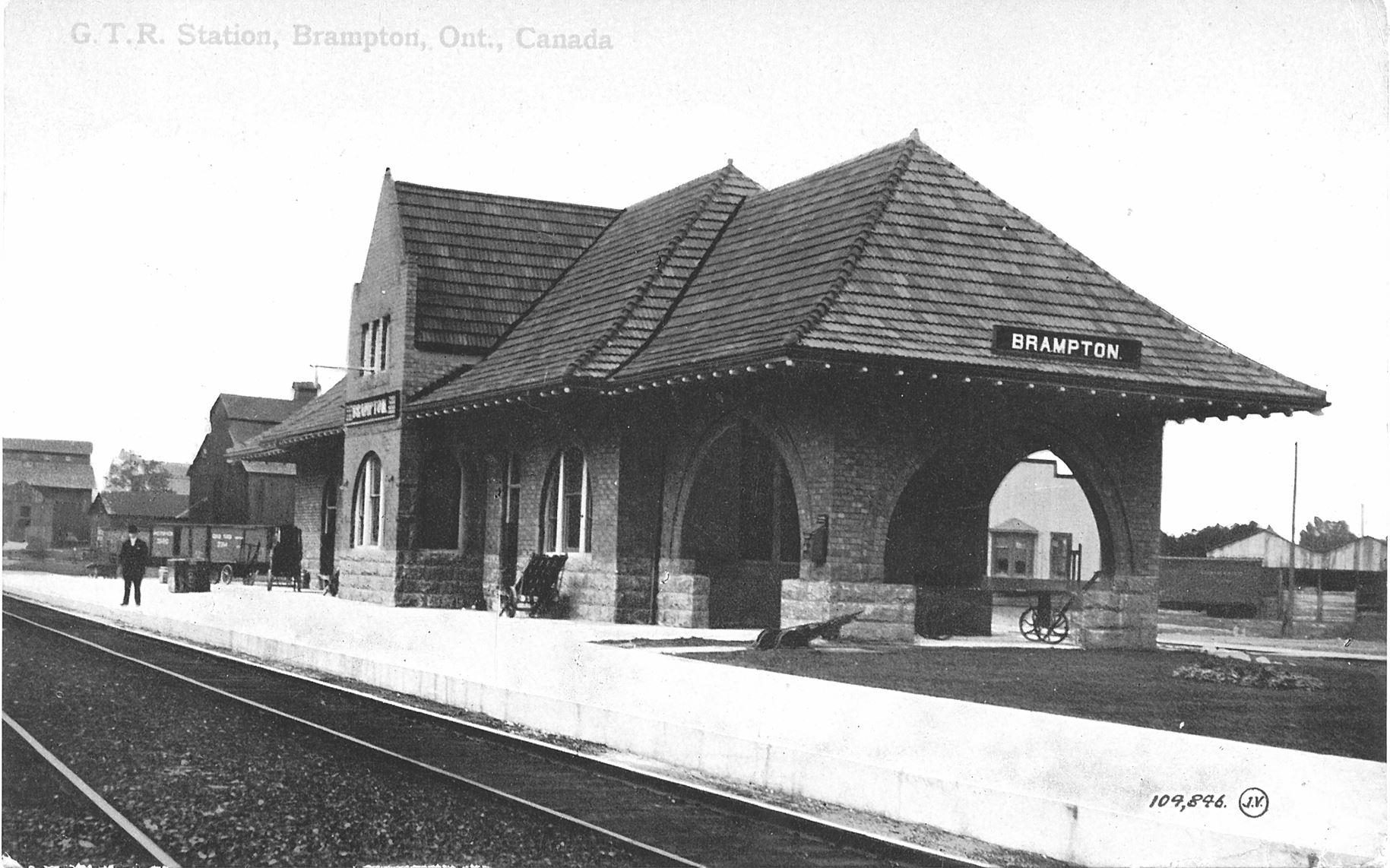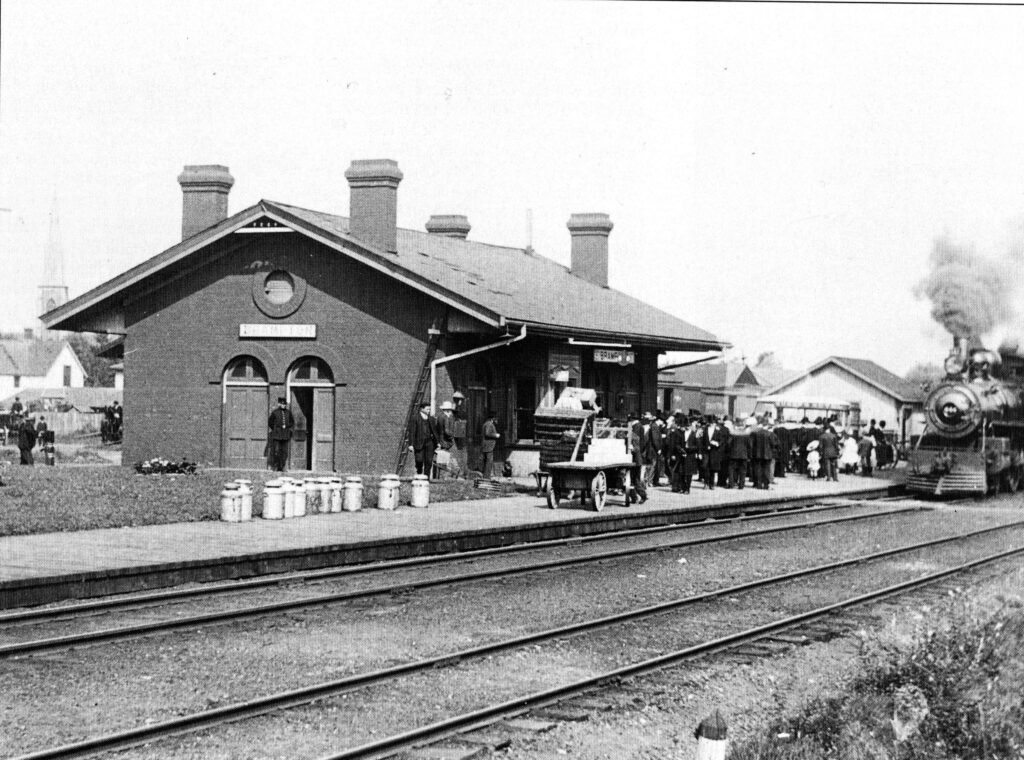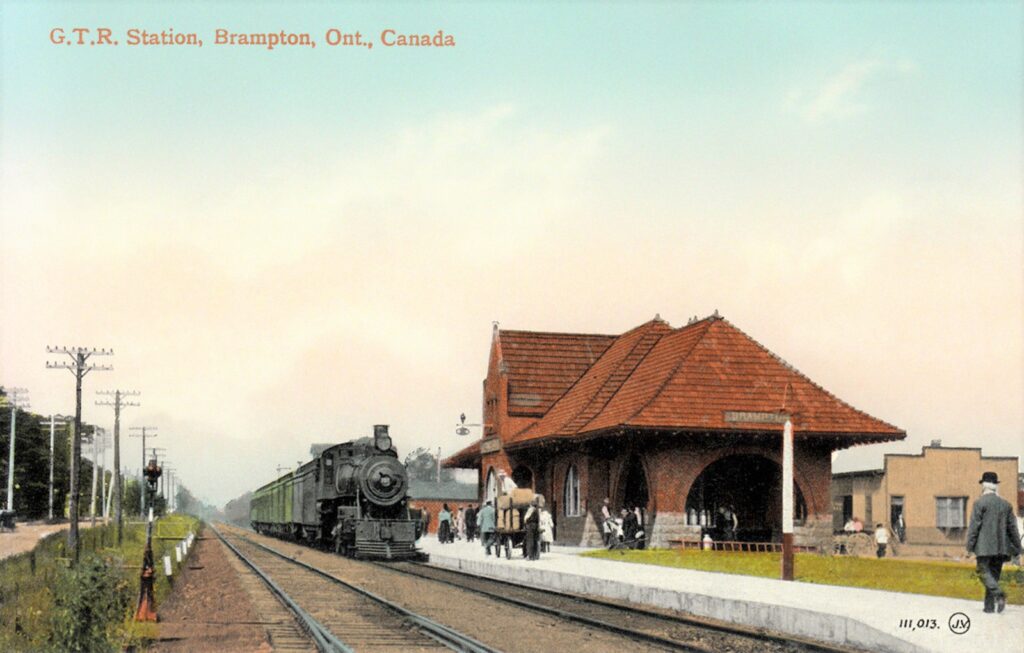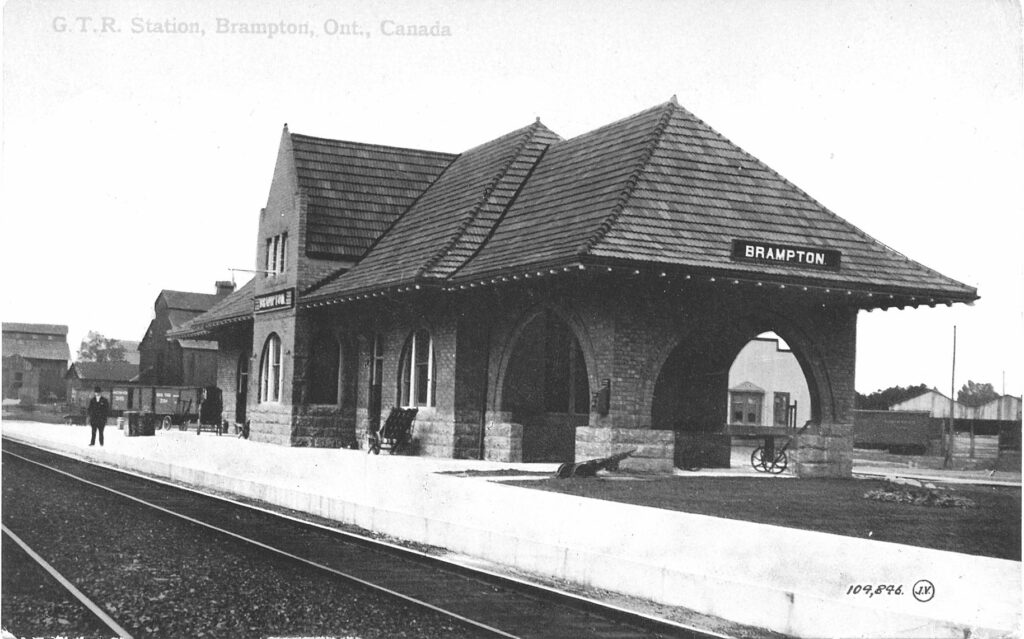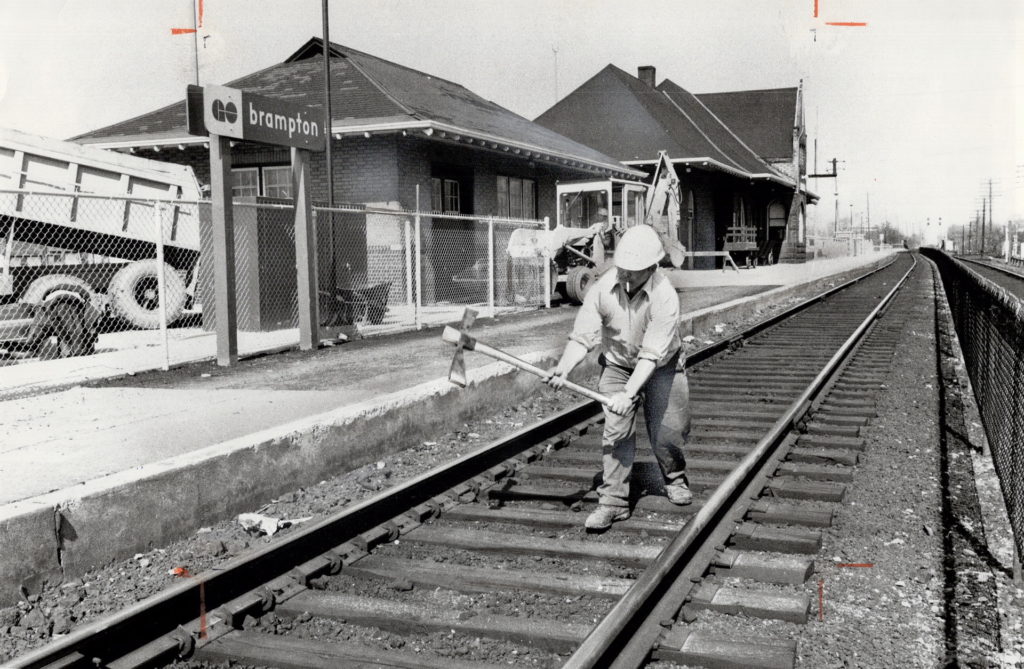Summary
Brampton Station was built by the Grand Trunk Railway in 1855 while the railway’s construction was progressing westward from Toronto, just two years after Brampton was first incorporated as a village. The first train from Toronto arrived in Brampton on October 18th, 1855, but service beyond Brampton to Guelph did not become available until July of 1856 after a bridge over the Credit River was completed. The station itself was a rectangular building with red brick walls, following a standard design the Grand Trunk initially used in virtually every settlement on its mainline east and west of Toronto with a handful of alterations. A total of four chimneys protruded from the building’s pitched roof, each connected to a woodstove or fireplace for warmth during Canada’s cold winters. The lengthwise walls were adorned with up to six French doors while each of the side walls had two. The railway brought much prosperity to Brampton and by 1869 it had reached a population of 1,800.
By 1877, passenger service to Brampton had increased to ten trains per day. Parts of the station building were modified over the course of the next two decades. A bay window was added onto the trackside wall to provide better visibility from within the station agent’s office. Most of the French doors on the lengthwise walls were converted into windows. The Grand Trunk replaced Brampton Station altogether in 1907, coinciding with a broader project to expand their mainline with a second track to allow for a higher volume of trains. The new station was designed in the Italianate style, though much like its predecessor used brick for its exterior walls. It featured a bellcast hip roof with multiple pitches and an extended canopy on the east side of the building, with arched entryways on all three sides. The main entrance to the station was located at the base of a square tower with a pyramid-shaped roof. On each side were rounded turrets both topped with a conical roof.
The Grand Trunk encountered financial difficulties through the early 20th century, culminating in its nationalization and subsequent absorption into the newly-formed Canadian National Railway in 1923. Service to Brampton Station was still ten trains per day by 1941, virtually unchanged from the 1877 timetable. This increased to sixteen trains per day by the 1950’s, but the popularization of automobiles and air travel during the postwar era would contribute to a significant decline in passenger ridership. This was exacerbated by the construction of Highway 401 south of Brampton in 1959. By 1974 service had decreased to nine trains per day. That year, Brampton Station became a stop on GO Transit’s new Kitchener Line, supplanting the existing commuter service offered by Canadian National. The remaining regional passenger service offered by CN was assumed by VIA Rail in 1977. Amtrak technically began stopping at Brampton in 1982 with the revival of The International between Toronto and Chicago, operated jointly by Amtrak and VIA Rail using Amtrak equipment. Brampton Station was federally protected under the Heritage Railway Stations Protection Act in 1992. The International ceased operating in 2004, but Brampton continues to be served by Metrolinx (GO Transit) commuter trains and VIA Rail’s Toronto-Sarnia corridor trains. In 2014, the station was sold by Canadian National to Metrolinx for $2.5 million.
Condensed Station Info:
| Location: | Served By: | Current State: | Date Built: | Date Demolished: |
| Church Street West near Mill Street | GTR (1855 – 1923) CNR (1923 – 1974) GO (1974 – Present) VIA (1977 – Present) | Demolished (First) Preserved (Second) | 1855 (First) 1907 (Second) | 1907 (First) N/A (Second) |


